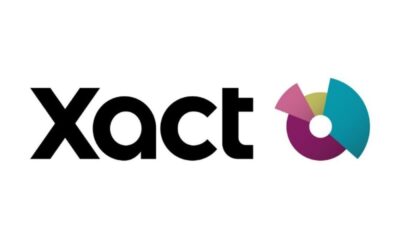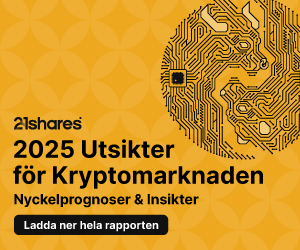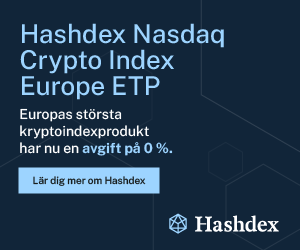Nyheter
Revitalized Japanese Stock Market Fuels Investor Optimism
Publicerad
1 år sedanden

Promising signs of growth and reform in Japan are instilling investors with renewed optimism, revitalizing the country’s stock market. Dina Ting, Head of Global Index Portfolio Management for Franklin Templeton Exchange-Traded Funds, delves into these developments and sheds light on Japan’s expanding economic prospects.
High-profile endorsements of Japanese blue chips ignited optimism in Tokyo’s markets last year as the yen depreciated. An expected macro regime shift from deflation to inflation, robust corporate earnings and Japan’s corporate governance reform efforts, such as improved shareholder advocacy, are fueling further optimism in 2024.
The bullishness comes despite Japan’s fall in world rankings—when Germany eclipsed it recently as the world’s third-largest economy—following a surprise technical recession in the third quarter of 2023. Prospects for wage growth also continue to underpin the country’s still-sluggish private consumption and capital spending.
Fortunately, however, economists anticipate Japan’s 2024 wage hikes to be higher than last year’s already encouraging increase of 3.6%—the highest in three decades. Japanese union leaders have been amplifying calls for wage hikes to exceed last year’s levels, with Prime Minister Fumio Kishida also urging the need for broader, sustained hikes that rise above inflation.
In late February, the Nikkei 225 also broke its highest level since 1989 (the year Nintendo’s Game Boy was first released), making Japanese stocks some of the best developed market performers thus far this year. Market exuberance over artificial intelligence (AI) at a “tipping point” and the sharp depreciation of the Japanese yen has led to even more foreign investors buoying Japan’s stock market.
Aggregate net profits for listed Japanese manufacturers grew more than 20% annualized for the April-to-December period, due to price hikes and brisk auto and machinery sales resulting from a solid US economy. In fact, the FTSE Japan RIC Capped Index, up 5.8% year-to-date, has seen its biggest gains from the auto-heavy consumer discretionary sector.
As investors continue to sour on China, they have shifted investment to other Asian markets. Despite its demographic challenges (which other high-income nations also face), Japan benefits not only from a climate in which corporate profits are continuing to grow but from more diversification than semiconductor-centric markets as Taiwan and South Korea, where the information technology sector respectively comprises 63% and 33% of their benchmarks.
This is not to say that the reboot to Japan’s semiconductor industry is insignificant. On the contrary, it serves as another reason we feel its markets may be poised for more potential upside. Just as other governments have been emphasizing the need to build up their domestic chip industries, Japanese officials have also pushed to regain leadership in the onshore manufacturing of advanced chips. This month, with backing from heavyweights Sony and Toyota, Taiwan’s biggest chipmaker announced plans to expand its operations in Japan’s southern Kumamoto region, with the goal of having a second new factory operational there before 2028. Japanese government subsidies of about US$4.9 billion have been slated for the second factory, and successive large amounts in government support for both factories should benefit not only the industry but employment and the local economy.
In our opinion, these trends may lay the groundwork for Japanese companies to extend a virtuous cycle of pay increases, which may ultimately convince the country’s central bank to depart from its negative interest-rate policy. For investors who are now re-evaluating their global asset allocations, we believe Japan-focused exchange-traded funds are worth considering for a cost-effective approach to addressing underweights to Japan Inc.
Du kanske gillar
-


Crypto responds to Trump’s Executive Order and Japan’s rate hike
-


Ny ETF från Amundi med brett diversifierad exponering mot den japanska aktiemarknaden och valutasäkring mot US-dollarn
-


Global ETF trends to watch in 2025
-


China’s ETF outflows captured elsewhere in Asia
-


A stimulative environment for midcaps
-


QDVN ETF köper aktier i Japan med höga ESG-betyg och valutasäkrar dem till euro
Nyheter
IQSD ETF investerar i aktier från utvecklade marknader över hela världen
Publicerad
18 timmar sedanden
31 mars, 2025
Invesco Quantitative Strategies ESG Global Equity Multi-Factor UCITS ETF EUR PfHdg Dist (IQSD ETF) med ISIN IE0008YN55P8, är en aktivt förvaltad ETF.
Den börshandlade fonden investerar i aktier från utvecklade marknader över hela världen. Aktieurvalet baseras på ESG-kriterier (Environmental, Social and Governance) och rättvisefaktorer (Momentum, Quality och Value). Valutasäkrad till euro (EUR).
Den börshandlade fondens TER (total cost ratio) uppgår till 0,30 % p.a. Invesco Quantitative Strategies ESG Global Equity Multi-Factor UCITS ETF EUR PfHdg Dist är den billigaste ETF som följer Invesco Quantitative Strategies ESG Global Equity Multi-Factor (EUR Hedged). ETFen replikerar det underliggande indexets prestanda genom fullständig replikering (köper alla indexbeståndsdelar). Utdelningarna delas ut till investerarna (kvartalsvis).
Denna ETF lanserades den 7 september 2022 och har sin hemvist i Irland.
Produktbeskrivning
Invesco Quantitative Strategies ESG Global Equity Multi-Factor UCITS ETF EUR PfHdg Dist syftar till att leverera överlägsen riskjusterad avkastning på lång sikt jämfört med utvecklingen på globala aktiemarknader genom att investera i en aktivt förvaltad portfölj av globala aktier som uppfyller en definierad uppsättning kriterier för miljö, social och bolagsstyrning (“ESG”). För att minimera exponeringen för fluktuationer i växelkursen mellan USD och EUR, ingår den portföljsäkrade andelsklassen EUR i valutatransaktioner. Fonden delar ut intäkter på kvartalsbasis.
Kvalificerade aktier screenas för överensstämmelse med fondens ESG-kriterier och betygsätts sedan baserat på deras attraktionskraft med avseende på tre investeringsfaktorer: Värde (dvs. företag som upplevs vara billiga i förhållande till marknadsgenomsnitt), kvalitet (d.v.s. företag som uppvisar starkare balansräkningar relativt sett) till marknadsgenomsnitt) och Momentum (dvs. företag vars historiska aktiekursutveckling eller vinsttillväxt har överstigit marknadsgenomsnittet).
Fonden kommer att inneha en underuppsättning av dessa aktier, med hjälp av en optimeringsprocess som strävar efter att maximera exponeringen mot dessa investeringsfaktorer samtidigt som den inriktar sig på en riskprofil som är förenlig med fondens investeringsmål. Den ”kvantitativa investeringsmodellen” använder matematiska, logiska och statistiska tekniker för aktieurval. Fondinnehavet balanseras om månadsvis.
Värdet på investeringar, och eventuella intäkter från dem, kommer att fluktuera. Detta kan delvis bero på förändringar i valutakurser. Investerare kanske inte får tillbaka hela det investerade beloppet.
Jämförelseindexet är MSCI World Index och visas endast för jämförelser av prestanda. Fonden följer inte indexet.
En investering i denna fond är ett förvärv av andelar i en aktivt förvaltad fond snarare än i de underliggande tillgångarna som ägs av fonden.
Handla IQSD ETF
Invesco Quantitative Strategies ESG Global Equity Multi-Factor UCITS ETF EUR PfHdg Dist (IQSD ETF)
Det betyder att det går att handla andelar i denna ETF genom de flesta svenska banker och Internetmäklare, till exempel DEGIRO, Nordnet, Aktieinvest och Avanza.
är en europeisk börshandlad fond. Denna fond handlas på flera olika börser, till exempel Deutsche Boerse Xetra och Borsa Italiana.
Börsnoteringar
| Börs | Valuta | Kortnamn |
| Gettex | EUR | IQSD |
| Borsa Italiana | EUR | IQSD |
| XETRA | EUR | IQSD |
Största innehav
| Namn | CUSIP | ISIN | Vikt % |
| NVIDIA CORP USD0.001 | 67066G104 | US67066G1040 | 4.96% |
| MICROSOFT CORP USD0.00000625 | 594918104 | US5949181045 | 4.64% |
| Meta Platforms INC USD0.000006 | 30303M102 | US30303M1027 | 2.91% |
| JPMORGAN CHASE & CO USD1 | 46625H100 | US46625H1005 | 2.36% |
| APPLIED MATERIALS INC USD0.01 | 038222105 | US0382221051 | 1.79% |
| QUALCOMM INC USD0.0001 | 747525103 | US7475251036 | 1.72% |
| Cigna Group/The USD0.01 | 125523100 | US1255231003 | 1.59% |
| Cencora Inc USD0.01 | 03073E105 | US03073E1055 | 1.57% |
| CARDINAL HEALTH INC NPV | 14149Y108 | US14149Y1082 | 1.51% |
| TJX COMPANIES INC USD1 | 872540109 | US8725401090 | 1.45% |
Innehav kan komma att förändras

Under mars 2025 förändrades listan på de mest eftersökta ETFerna kraftigt. Den största förändringen är att svenskarna har en ny favorit-ETF. Den ständiga favoriten Xact Norden Högutdelande har petats ned från sin första plats. Även förra månadens vinnare 21Shares Sui Staking ETP (ASUI ETP) som spårar kryptovalutan SUI har rasat. Istället är det Sveriges första månadsutdelande ETF Montrose Global Monthly Dividend MSCI World UCITS ETF (MONTDIV ETF) med IE000DMPF2D5, kombinerar månatliga utdelningar, global diversifiering i världens största bolag och en systematisk optionsstrategi som våra besökare letar information om.
Det betyder att det går att handla andelar i dessa ETFer genom de flesta svenska banker och Internetmäklare, till exempel Nordnet, SAVR, DEGIRO och Avanza.
Hur högt kommer vi när du Googlar på ordet ETF?
Under mars 2025 såg vi många sökningar på begreppen ETF, börshandlad fond och Etfmarknaden. Om det var vår egen sida eller om det var den totala marknaden för ETFer som besökarna sökte på vet vi inte, men efter att ha fått mail från en av de större emittenterna vet vi att de försöker kartlägga de svenska placerarnas exponering mot börshandlade fonder.
Om du söker på ordet ETF på Google, hur högt hamnar vi då?
Kraftigt ökat intresse för försvarsfonderna
Vilken ETF för försvarsindustrin är bäst och hur investerar man i denna sektor med hjälp av börshandlade fonder? I dag finns det tre ETFer som ger exponering mot flyg och försvar som följer tre olika index. De årliga förvaltningskostnaderna ligger 0,35 och 0,55 procent. Vi har skrivit en artikel om olika försvarsfonder. Du hittar mer om ETFer för försvarsindustrin här.
Utöver detta har Wisdomtree lanserat en försvarsfond som investerar i europeiska företag, och HANetf har meddelat att företaget har för avsikt att göra det samma. Namnet på HANetfs börshandlade fond är ännu inte känt, men kortnamnet kommer att vara ARMY i London och 8RMY på tyska Xetra.
Aktivt förvaltad fixed income ETF från iShares
BlackRock har lanserat iShares € Flexible Income Bond Active UCITS ETF (IFLX), en ny aktivt förvaltad Fixed Income UCITS ETF utformad för att maximera intäkter i portföljer samtidigt som den långsiktiga kapitaltillväxten bibehålls. IFLX ger kunderna det bästa av BlackRocks ränteinsikter i bekvämligheten med ETF-omslaget.
IFLX strävar efter att generera attraktiva intäkter genom en kärna av europeiska tillgångar genom att allokera över ränteuniversumet, utan begränsningar av traditionella riktmärken, samtidigt som de vanligtvis bibehåller ett IG-betyg. Fonden bygger på en diversifierad allokering till Investment Grade (IG)-krediter, High Yield (HY)-krediter och värdepapperiserade tillgångar, och strävar efter att maximera intäkter över marknadscykler.
Inte längre populärast av dem alla
XACT Norden Högutdelande är utan tvekan en av de mest populära av alla de ETFer som vi har skrivit om på vår sida. Den kvartalsvisa utdelningen och dess satsning på aktier med en låg volatilitet och hög direktavkastning gör det till en populär fond som återfinns i mångas depåer. Nyligen lämnades årets första utdelning från denna börshandlade fond.
Månadsutdelande fond från JPM tilldrar sig stort intresse
Den 6 november förra året, bara dagar efter att vi publicerat en artikel om månadsutdelande fonder, lanserade JP Morgan en helt ny variant av en månadsutdelande fond. JPMorgan US Equity Premium Income Active UCITS ETF USD (dist) (JEIP ETF) med ISIN IE000U5MJOZ6, är en aktivt förvaltad ETF.
Den börshandlade fonden investerar i företag från USA. Ytterligare intäkter söks genom användning av en överlagringsstrategi med derivatinstrument. Denna ETF strävar efter att generera en högre avkastning än S&P 500-index.
Detta ledde till att vi fick uppdatera vår artikel om månadsutdelande fonder med JEIP men också med JPMorgan Nasdaq Equity Premium Income Active UCITS ETF USD (dist) (JEQP ETF) med ISIN IE000U9J8HX9, som är en aktivt förvaltad ETF, men som mäter sig mot Nasdaq-100 istället.
Under den sista veckan i februari 2025 noterade Montrose den första svenska ETFen på fem år. MONTDIV ETF är Sveriges första månadsutdelande ETF och rusade snabbt på listan efter de mest eftersökta börshandlade fonderna på vår sida. Besök vår sida och läs mer om Montrose Global Monthly Dividend MSCI World UCITS ETF (MONTDIV ETF) fungerar.
Indien är en marknad som många söker information om
ETF Indien är inte en specifik börshandlad fond, men förekommer i en mängd olika varianter. Det finns tydligen ett stort intresse för att investera i indiska aktier bland sidan besökare, och då är kanske en ETF ett bra sätt att göra det. Vi skrev under i början av året en artikel om olika Indienfonder. Sedan dess har det dykt upp ytterligare ett par ETFer med fokus på Indien så vi har uppdaterat artikeln.
Halalfonder är nu hetare än ESG
Tidigare var det många som sökte på begreppet ESG, men detta sökord har fallit från listan under de senaste månaderna. En variant av ESG-fond är de fonder som har en islamistisk inriktning, så kallade halalfonder, och det är fortfarande något som våra besökare letar information om. En sådan fond är ASWE, som är en aktivt förvaltad shariafond men till exempel HSBC har en serie fonder med fokus på att investera enligt islam. Det är ingen speciell enskild fond som sticker ut och lockar mer än andra.
Räntesänkningar ökar intresset för fastigheter
Ett annat begrepp på listan är ETF fastigheter. Allt fler investerare tror att vi kommer att få se ytterligare räntesänkningar, inte bara i Sverige och Europa, men även i USA. Lägre räntor gör det enklare att räkna hem en investering i fastigheter. Kan det vara så att våra besökare undersöker möjligheterna att positionera sig i en ETF för fastigheter innan räntorna sänks för att de tror att det kommer att leda till en uppvärdering av fastighetsbolagen? Vill du ha några idéer så skrev vi en text om börshandlade fonder som investerar i fastigheter.
Du kan även läsa den text vi skrev i januari 2025 som heter 10 ETFer för att investera i fastigheter.
Du kan handla Ripple med olika börshandlade produkter
Valour Ripple (XRP) SEK är en börshandlad produkt som spårar priset på XRP, Ripples infödda token. XRP förbättrar främst globala finansiella överföringar och utbyte av flera valutor. Snabb och miljövänlig, den digitala tillgången XRP designades för att fungera som den mest effektiva kryptovalutan för olika applikationer inom finanssektorn.
Valour Ripple (XRP) SEK ETP (ISIN: CH1161139584) är en börshandlad produkt som spårar priset på XRP, Ripples infödda token.
XRP har ett börsvärde på 29,57 miljarder USD och rankas på en sjätte plats bland alla kryptovalutor globalt. Ripple XRP är en nyckelspelare inom det digitala valutaområdet, känd för sin användning för att underlätta snabba och billiga internationella pengaöverföringar. XRP fungerar på RippleNet och fungerar som en bryggvaluta i Ripples betalningsnätverk, vilket möjliggör sömlösa valutaväxlingar över hela världen. Detta har positionerat XRP som ett föredraget val för finansiella institutioner som söker effektiva alternativ till traditionella gränsöverskridande betalningsmetoder.
I somras meddelade Virtune att företaget lanserat sin egen version, Virtune XRP ETP på Nasdaq Stockholm idag den andra juli 2024. Denna produkt dyker också upp men betydligt längre ned på vår lista. Det var länge sedan någon av Virtunes produkter hamnade på listan, så det är extra kul att se att de dyker upp igen även om det är långt ned.
Produkten erbjuder exponering mot XRP. ETPn är 100% fysiskt uppbackad, handlas i SEK och är tillgänglig för investerare i Sverige och övriga Norden på Avanza och Nordnet.
Är du nyfiken på vilka börshandlade produkter det finns för att investera i XRP? Vi har självklart skrivit en artikel om detta där vi jämför alla de börshandlade alternativ vi hittat.
Går det att handla ETFer hos Swedbank?
Swedbank ETF tror vi kan tolkas att det endera finns intresse för att veta om Swedbank har ETFer i sitt utbud, eller om det går att handla börshandlade fonder på Swedbank. Svaret på denna fråga återfinns här.
EUDF ETF satsar på Europas försvarsindustri
WisdomTree Europe Defence UCITS ETF EUR Unhedged Acc (EUDF ETF) med ISIN IE0002Y8CX98, försöker spåra WisdomTree Europe Defence UCITS-index. WisdomTree Europe Defence UCITS-index spårar prestanda för europeiska företag som är engagerade i militär- eller försvarsindustrin.
Stort intresse för relativt okänd kryptovaluta
En relativt okänd kryptovaluta som ger exponering mot Sui-blockkedjan har dykt upp på listan. Vi har bara hittat två emittenter som erbjuder en produkt på denna kryptovaluta, schweiziska 21Shares och Valour.
21Shares Sui Staking ETP (ASUI ETP), med ISIN CH1360612159, är 100 % fysiskt uppbackad av SUI-tokens och spårar resultatet av SUI för att erbjuda ett enkelt, reglerat och transparent sätt för investerare att få exponering mot Sui-blockkedjan. Sui är designad för att tillhandahålla snabba, säkra och skalbara decentraliserade applikationer (dApps) med sitt utvecklarvänliga programmeringsspråk och innovativa sätt att behandla transaktioner. 21Shares Sui Staking ETP erbjuder ett enkelt, reglerat och transparent sätt att dra nytta av nätverkets växande användning.
Under oktober 2024 har Valour noterat sin egen ETP på denna kryptovaluta, Valour Sui (SUI) SEK med ISIN CH1213604601.
Det går att handla börshandlade fonder hos Nordea
Nordea har en plattform, och i denna handelstjänst erbjuder denna bank tusentals olika ETFer. Det går att handla ETFer med fokus på räntemarknaden, aktiemarknaden, landspecifika ETFer och börshandlade fonder med fokus på olika branscher. Att handla ETFer hos Nordea sker endera i Nordea Investor och nätbanken.
Valours Hedera ETP får många sökningar igen
HBAR är en börshandlad produkt som inte ens har hunnit lanseras ännu. I slutet av januari kommunicerade Valour att företaget hade för avsikt att lansera en fysiskt uppbackad börshandlad produkt (ETP) Valour HBAR Staking ETP i samarbete med The Hashgraph Association (THA) – en schweiziskbaserad produkt oberoende och ideell organisation fokuserad på att ge en digital framtid för alla genom att utnyttja Hederas miljövänliga distribuerade ledger-teknologi (DLT).
Så här köper du den spanska aktiemarknaden med börshandlade fonder
Det enklaste sättet att investera på den spanska aktiemarknaden är att investera i ett brett marknadsindex. Detta kan göras till låg kostnad genom att använda ETFer. På den spanska aktiemarknaden hittar du tre index som spåras av fyra ETFer.
Förutom ETFer på Spanien, finns det inga regionala ETFer tillgängliga med en betydande vikt av spanska aktier. Även index för länder i euroområdet väger Spanien med mindre än tio procent.
Dyrare kaffe skapar intresse för börshandlade produkter
Det stigande kaffepriset (som du kan följa här) har lett till ett ökat intresse bland investerarna för att köpa en ETF som spårar kaffepriset. Det finns emellertid ingen ETF som spårar kaffepriset, då Eus regler kräver att det finns minst 16 olika komponenter i en ETF. Det finns emellertid ett par ETCer som gör samma sak, till exempel WisdomTree Coffee (OD7B ETC).
Denna ETF ger exponering mot guldpriset – utan avgift
I och med att guldpriset har rört sig uppåt har intresset för guldfonder kommit att bli mer populärt överlag. Den mest populära fonden är 4GLD, Xetra-Gold som erbjuder investerare en optimal och enkel möjlighet att delta i utvecklingen av guldmarknaden. Dessutom är handel med Xetra-Gold också mycket kostnadseffektiv eftersom den till skillnad från andra värdepapper inte kommer med varken abonnemangsavgifter eller förvaltningsavgifter.
SAVRs ETF-satsning skapar stort intresse
SAVR har precis valt att lansera handel med börshandlande fonder. SAVR som tidigare varit kände för att erbjuda handel med traditionella fonder har nyligen valt att lansera handel med aktier, men också med ETFer på framför allt tyska Xetra. På denna marknad erbjuder nu SAVR med flera ETFer än vad både Nordnet och Avanza gör.
Samtidigt har SAVR valt att lansera en egen produkt tillsammans med amerikanska Vanguard, SAVR Global by Vanguard.
Utdelningen i XACT Sverige
Under juni 2024 lämnade XACT Sverige sin årliga utdelning, något som fick många att söka information kring denna. XACT Sverige lämnar, till skillnad från XACT Norden Högutdelande, endast utdelning en gång per år. Av denna orsak blir det inte lika mycket skrivet om denna ETF. I år blir denna utdelning 25,10 SEK per andel vilket du kan läsa mer om här.
Amerikanska large caps är något många vill veta mer om
Fonder som följer S&P 500 är, föga förvånande, en typ av fonder som det finns stort intresse kring. Det är ingen speciell enskild fond som sticker ut och lockar mer än andra. Det skall emellertid noteras att många sökningar sker på ord som ”Fond som följer S&P500 Avanza”. Vi skrev tidigare en artikel om S&P500 fonder, 26 börshandlade fonder som spårar S&P500 där vi jämförde alla de ETFer som spårar detta index i sin grundform.
En ny börshandlad fond från iShares lanserades under november. iShares S&P 500 Top 20 UCITS ETF (IS20) spårar resultatet för S&P 500 Top 20 Select 35/20 Capped-index. Fonden investerar direkt i de 20 största amerikanska företagen i S&P 500-indexet.
Kaspa kvar på listan trots ett minskat intresse
Valour Kaspa (KAS) SEK (Valour Kaspa SEK) med ISIN CH1108679379, är en börshandlad produkt (ETP) som spårar KAS, den infödda symbolen för Kaspa blockchain. Genom att använda sitt GhostDAG-protokoll bearbetar Kaspa block parallellt, vilket möjliggör snabb transaktionsavslutning och hög skalbarhet. KAS-tokenen används för transaktionsavgifter och nätverkssäkerhet genom mining. Med sin effektiva och decentraliserade design stöder Kaspa skalbara blockkedjeapplikationer, vilket ger både utvecklare och användare kraft.
Den svenska emittenten av börshandlade produkter, Virtune, som tidigare funnits med bland de hundra mest populära sökningarna har rasat kraftigt på listan och återfinns först på plats 130. Vi brukar ha med en eller ett par texter kring denna emittent varje månad på Etfmarknaden.se, och bolaget har precis lanserat sina produkter på den finska marknaden så detta fall förvånar oss. Precis som konkurrenten Valour noterar Virtune sina börshandlade kryptoprodukter i Sverige, och i svenska kronor.
Det skall emellertid noteras att när vi väljer att inte använda oss av Google utan istället av sökmotorn Bing så hamnar Virtune högt upp på listan. Det är emellertid en stor skillnad mellan antal sökningar hos Google och konkurrenten Bing. Hos Bing hamnar det felstavade sökbegreppet xrp virune avanza på sjätte plats medan virtune xrp etp avanza hamnar på tionde plats, vilket är högre än vad både både Xact Norden Högutdelande och Montrose placerar sig på denna sökmotor.
Nyheter
VEGF ETF för korta statsobligationer från Eurozonen
Publicerad
20 timmar sedanden
31 mars, 2025
Vanguard EUR Eurozone Government 1-3 Year Bond UCITS ETF (EUR) Accumulating (VEGF ETF) med ISIN IE00004S2680, strävar efter att följa Bloomberg Euro Aggregate Treasury 1-3 Year-index. Bloomberg Euro Aggregate Treasury 1-3 Year Index följer eurodenominerade statsobligationer utgivna av medlemmar i euroområdet. Löptid: 1-3 år. Betyg: Investment Grade.
Den börshandlade fondens TER (total cost ratio) uppgår till 0,07% p.a. Vanguard EUR Eurozone Government 1-3 Year Bond UCITS ETF (EUR) Accumulating är den billigaste och största ETF som följer Bloomberg Euro Aggregate Treasury 1-3 Year index. ETFen replikerar det underliggande indexets prestanda genom samplingsteknik (köper ett urval av de mest relevanta indexbeståndsdelarna). Ränteintäkterna (kupongerna) i ETFen ackumuleras och återinvesteras.
Vanguard EUR Eurozone Government 1-3 Year Bond UCITS ETF (EUR) Accumulating är en mycket liten ETF med 5 miljoner euro tillgångar under förvaltning. Denna ETF lanserades den 11 mars 2025 och har sin hemvist i Irland.
Fondens mål
- Fonden använder en passiv förvaltning – eller indexering – investeringsmetod, genom fysiskt förvärv av värdepapper, och strävar efter att spåra resultatet för Bloomberg Euro-Aggregate: Treasury – 1-3 Year Index (”Indexet”).
- Fonden investerar i ett representativt urval av obligationer som ingår i indexet för att nära matcha indexets kapital- och inkomstavkastning.
- Indexet mäter utvecklingen av statsobligationer i euro med fast ränta utgivna av regeringarna i EUs medlemsländer som deltar i Europeiska monetära unionen och som har ett nominellt utestående belopp som är större än eller lika med 300 miljoner euro.
- Obligationer i Indexet har en löptid på mellan ett och tre år och har generellt betyget investment grade.
- Fonden kan i mindre utsträckning investera i liknande typer av obligationer utanför indexet, men vars risk- och avkastningsegenskaper nära liknar risk- och avkastningsegenskaperna hos beståndsdelar i indexet eller indexet som helhet.
- Fonden försöker förbli fullt investerad och hålla små summor kontanter förutom under extraordinära marknadsförhållanden, politiska eller liknande förhållanden där fonden tillfälligt kan avvika från denna investeringspolicy för att undvika förluster.
- Även om fonden förväntas följa indexet så nära som möjligt, kommer det vanligtvis inte att matcha resultatet för målindexet exakt, på grund av olika faktorer såsom utgifter som ska betalas av fonden och regulatoriska begränsningar. Detaljer om dessa faktorer och fondens förväntade tracking error finns i prospektet.
Handla VEGF ETF
Vanguard EUR Eurozone Government 1-3 Year Bond UCITS ETF (EUR) Accumulating (VEGF ETF) är en europeisk börshandlad fond. Denna fond handlas på flera olika börser, till exempel Deutsche Boerse Xetra och Euronext Amsterdam.
Det betyder att det går att handla andelar i denna ETF genom de flesta svenska banker och Internetmäklare, till exempel Nordnet, SAVR, DEGIRO och Avanza.
Börsnoteringar

IQSD ETF investerar i aktier från utvecklade marknader över hela världen

Svenskarna har en ny favorit-ETF

VEGF ETF för korta statsobligationer från Eurozonen

Virtune lanserar Virtune Litecoin ETP på Nasdaq Stockholm

Fonder för att investera i resor och turism

100 gånger pengarna, aktier som gör 10 000 kronor till 1 miljon

Fonder som ger exponering mot försvarsindustrin

WisdomTree lanserar europeisk försvarsfond.

Warren Buffetts råd om vad man ska göra när börsen kraschar

Trumps återkomst får europeiska aktier att rusa
Populära
-

 Nyheter4 veckor sedan
Nyheter4 veckor sedan100 gånger pengarna, aktier som gör 10 000 kronor till 1 miljon
-

 Nyheter1 vecka sedan
Nyheter1 vecka sedanFonder som ger exponering mot försvarsindustrin
-

 Nyheter3 veckor sedan
Nyheter3 veckor sedanWisdomTree lanserar europeisk försvarsfond.
-

 Nyheter7 dagar sedan
Nyheter7 dagar sedanWarren Buffetts råd om vad man ska göra när börsen kraschar
-

 Nyheter3 veckor sedan
Nyheter3 veckor sedanTrumps återkomst får europeiska aktier att rusa
-

 Nyheter4 veckor sedan
Nyheter4 veckor sedanSAVR Global by Vanguard: Ett billigt alternativ till globala indexfonder
-

 Nyheter2 veckor sedan
Nyheter2 veckor sedanDe bästa börshandlade fonderna för tyska utdelningsaktier
-

 Nyheter4 veckor sedan
Nyheter4 veckor sedanUtdelning i XACT Norden Högutdelande mars 2025




